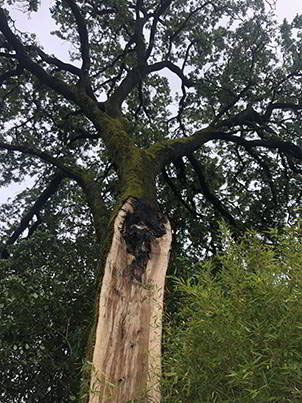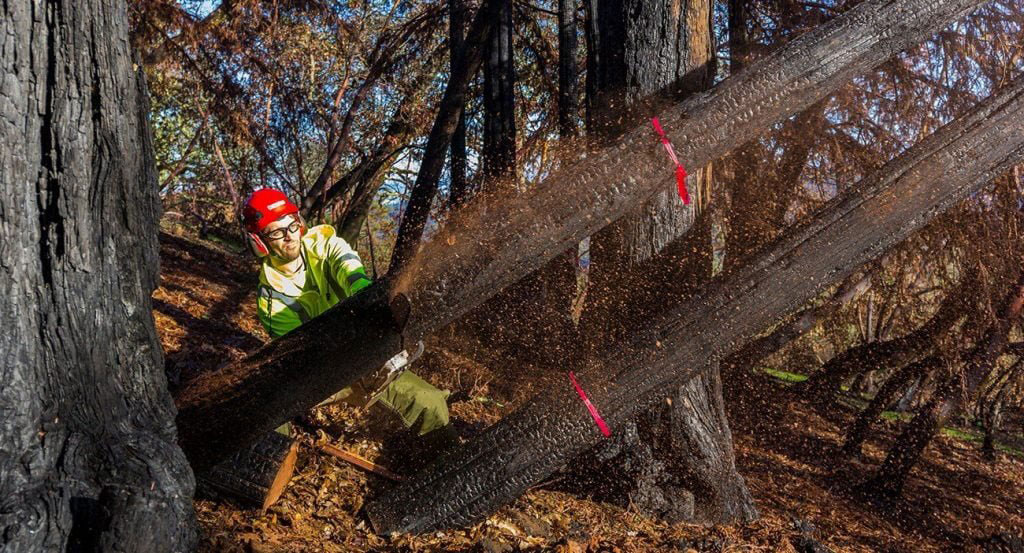
- Trunk failure from weakly attached multiple trunks. Trees with “V” shaped co-dominant or multiple trunks are inherently more likely to fail than trees with a single trunk and horizontally attached limbs. Coast live oaks often have multiple trunks. These stress areas may fail when wind and heat associated with fire damage.
- Trunk failures caused by interior damage to heart wood by fire through tree cavities. Hollow areas especially near the lower trunk act as an entry point for fire. Fire can burn through a cavity into the interior of the tree and burn upwards like a fire in chimney. Failure of the trunk may occur if the damage is severe.
- Trunk failure from stump re-growth. When trees are removed and the stumps are not ground out some species will grow several new trunks around the outer area of the tree. Also known as fairy rings in redwood forests, this type of growth pattern is also common in bay trees. The old stump in the center of the tree trunks will dry out and easily burn during a fire. As the old stump burns it weakens the surrounding new trunks and may cause multiple trunk failures.
- Limb failure from weakly attached branches or decay cavities. If fire moves into the canopy of the tree it can cause limb failures in areas with “V” shaped attachments or branches with cavities.
- Tree failure from root damage. If fire is hot enough it can damage tree roots. While most people think trees have a large tap root and roots that extend deep into the soil most tree roots are located within the top 12 inches of the soil. A young oak tree sends a very deep root initially but for most trees including oaks the roots extend laterally and “anchor” roots extend in an oblique direction to provide additional stability to the tree. Trees in high temperature burn areas such as next to structures or where multiple trees have burned may have root damage to the extent that the trees are no longer structurally sound. A root crown or lateral root excavation may be needed to inspect roots of high value trees.
Contact TreePro for tree assessments for fire damaged trees. A Certified Arborist will inspect the trees and if necessary provide a free estimate for pruning or removing fire affected trees.
Ron Wallace, Owner TreePro Professional Tree Care Certified Arborist #WE 0979A






